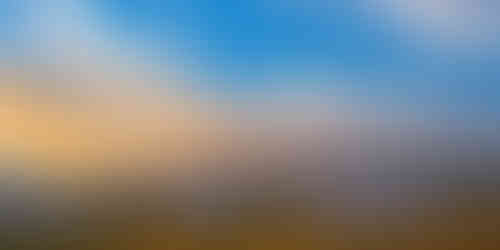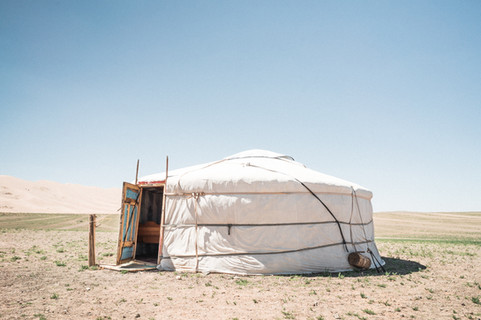Discover the traditional Mongolian yurt
- Davaadulam Byambajav

- Dec 16, 2020
- 4 min read
For at least three thousand years, Mongolian yurts have been a distinctive feature of life in Central Asia. The first written explanation of a yurt used by Herodotus as a dwelling (484~424 B. C.), is systematically illustrated by the historical development of various yurts.
Mongolian yurts have been a distinctive feature of life in Central Asia for at least three thousand years. The first written explanation of a yurt used as a dwelling recorded by Herodotus (484~424 B. C.), the historical development of various yurts is systematically illustrated. All nomadic Mongol and Turkish peoples used the yurt and found in a considerable territory spanning from Mongolia and Southern Siberia to Turkey.
There have been few studies of work on the thermal properties of yurts. Manfield compared the thermal comfort of three separate shelters used for the layout of an expedition shelter in extreme cold environment. Contemporary yurts, however, have only architectural similarity and many practical variations in some scenic spots near Hohhot city, China. Interestingly, the yurt has very few variations.
Felt making is the key to excellent thermal functionality. A very detailed felt making the process has been described by Guo et al. The yurt has an isolating fabric that is both versatile and thermally reactive in the form of removable felt layers that wrap around the wooden lattice and pole frame.
The felt is rolled up during the summer to allow for cross ventilation. The felt is permanently replaced in some parts of Asia by woven reed mats in order to maintain privacy and thermal comfort. Each felt layer has a thickness of between 20 and 30 mm and winter months.
The entrance to the Mongolian yurt faces south, combining spatial and functional properties. You will find an open circular hole called the "toon" in the middle of the wall. A ray of sunshine rotates around its inner wall on sunny days.
The light first appears between 5:00 a.m. and 7:50 a.m. depending on the season and moves around the various inner walls (khana).
The sundial allows the nomads to schedule their daily activities such as herd milking and processing, fuel dung drying, prayers, and fighting games. The angle of sunlight that comes through the toon and illuminates a space on the floor by the entrance to the yurt can differ depending on the time of year. Such clues used to guess what time it is and what month it is, thereby helping Mongolians decide whether to start travelling from summer pastures to winter pastures.
The Mongolians pay particular attention to the transhumances, seasonal movements based on a particular time, to avoid harming the livestock during the harsh winter in Mongolia and to choose the right time to move the yurt. Often, they pay attention not to disturb the sun, earth, and heaven spirits. Considered the warrant of the cultural traditions of their ancestors, nomadic people remain loyal to their culture and value their surroundings. Therefore, in the heart of the Mongolian steppes, the yurt remained their link to time.
Traditional yurts are an expanding circular wooden frame with a felt cover. The felt is made of the wool of sheep's flocks accompanying pastoralists. The timber to create the outer structure is not to be found on the treeless steppes and must be extracted by trade in the valleys below.
The structure consists of one or more wall-sections of expanding lattice, a door frame, bent roof posts, and a crown. In order to support the crown and straight roof poles, the Mongolian Ger has one or more columns. The wood frame (self-supporting) is covered with felt parts. Felt is additionally covered with cotton and/or wind-covers, depending on availability.
They vary in weight and size. These provide a surprisingly large amount of winter outdoor cold insulation and protection, and they are easily altered to keep the yurts cool for summer.
A yurt was planned to be demolished and the compact pieces borne on camels or yaks to be rebuilt elsewhere. It takes about 2.5 hours to complete the building.
Enza Tours LLC
If you're searching for a Mongolian tour, we're the Mongolian travel agency, you can build your exclusive Mongolian tour. We also have other Mongolia tours, and you can try the Khuvgul with another destination, the local nomadic community, while you are travelling, and we can help you build a tour for you.
Just write us an email, we're going to plan your tour with you and together we're going to create your happiness.
We give you the following tours and join our current tours:
Khuvsgul Lake Tour (including Tsaatan Community)
Explore the vast Gobi Desert and Sand Dunes
Horseback Riding Trail Visit National Park
Discover Khuvsgul Lake
Discover Mongolian Culture
Horse or Camel Tour
We also work with a local travel company such as eagle hunting show
We are the official tour operator, Enza Tours LLC, and we are developing tours in Mongolia.
Our clients will discover the nomadic people of Mongolia, the great desert of the Gobi, the reindeer community, the ancient Mongolian capital, Mongolian customs and traditional Mongolian food. Besides the beautiful nature, the customers will be amazed.
Our tour guides: For the past few years, our experienced staff have been continuously working in the inbound tourism sector. All professional people who speak English, German, Spanish fluently are guides.
Our guides have extensive knowledge of Mongolia's customs, history and culture. Some of our guides were living in countries in Europe and Asia. That's why you can talk
Our drivers: We're LLC Enza Tours! We already find that the most important factors on our trip are your security and enjoyment as well as normal. We offer comfortable and secure Russian truck, healthy Japanese jeeps and Korean cars and buses, and from ten to more than twenty years of experience

























































Comments